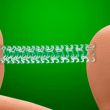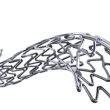Short Dual antiplatelet therapy (DAPT), one to three months, followed by P2Y12 inhibitor monotherapy has been shown to reduce bleeding events without increased cardiovascular events vs. standard DAPT, according to guidelines. However, the rate of major bleeding within the first month after procedure remains significant when using these strategies. The use of aspirin-free therapies (ASA)...
EuroCTO: Safety and Benefit at 3 Years
Chronic total occlusions (CTOs) account for approximately 15-20% of patients with stable coronary artery disease. This field has seen various advances regarding treatment, leading to an improvement in the success rate of procedures. According to registries and randomized studies, the main indication for percutaneous coronary intervention (PCI) of CTO should be based more on clinical...
Device Effectiveness for Femoropopliteal Artery Disease Treatment: Analysis of K-VIS ELLA Registry
Endovascular treatment of lesions in femoropopliteal territory (FPA) has become the main therapeutic option, seeing as it is less invasive and has faster recovery. It has used different devices, such as conventional bare metal stents (BMS), balloon angioplasty (POBA), and drug coated balloons (DCB), as well as drug eluting stents (DES). However, real world data...
ABSORB IV – Improving Bioresorbable Scaffolds: A Long Road
5-year followup of bioresorbable scaffolds in selected and better prepared lesions (ABSORB IV). Historically, when comparing previously used therapies, such as conventional balloon angioplasty (BA) against bare metal stent (BMS) and later against drug eluting stent (DES) implantation, we see significantly improved outcomes. These advances have shown reduced recoil and more effective restenosis inhibition, compared...
Calcified Nodules and the Importance of OCT Categorization prior PCI
TLR associated factors in patients with calcified nodules. Patients with complex cardiomyopathies undergoing percutaneous coronary intervention are increasingly common, as is the case for calcified lesions and calcified nodules (CN). Procedure complexity not only involves planning, but also establishing patient prognosis, taking into consideration the fact that most target vessel events occur at long term...
5 Year Evolution of PCI vs CABG in Large Randomized Studies on Acute and Chronic Coronary Syndrome
Left main lesions in acute coronary syndrome (ACS) represent a major risk and, at present, the best revascularization strategy is a matter of debate. Though many studies and registries have excluded this group of patients, there is data on the pros and cons of both percutaneous coronary intervention (PCI) and cardiac artery bypass graft (CABG). ...
Diffuse Coronary Artery Disease: One-Year 48mm XIENCE Skypoint Outcomes
Long 48mm Stent XIENCE Skypoint in the treatment of diffuse CAD Long coronary artery lesions often involve complex decision making since they can be treated either with a long stent or with shorter overlapping stents. Both in registries and meta-analysis, the overlapping technique has been associated to increased target vessel revascularization and increased radioscopy time,...
Abbreviated Therapy in Patients with Acute Coronary Syndrome: How Safe Is Conservative DAPT Treatment?
Abbreviated dual antiplatelet therapy in patients at high risk for bleeding and acute myocardial infarction. Patients with acute coronary syndrome (ACS) who undergo stent placement (percutaneous coronary intervention, PCI) conventionally require at least 12 months of dual antiplatelet therapy (DAPT) to reduce ischemic events. Patients with ACS who are also at high risk for bleeding...
PICCOLETO-II: Drug-Coated Balloons in Small Vessels
Use of drug-coated balloons vs. drug-eluting stents in small caliber vessels. The constant advancements in coronary device technology have significantly reduced complication rates (such as that of restenosis). However, there are gaps where a high number of undesirable events prevail, such as small vessel disease (SVD), for which, in previous studies up, the rate of...
Comparative Study of Two Drug Coated Balloons: Angiographic and Clinical Outcomes
The incidence of in-stent restenosis (ISR) requiring repeat revascularization ranges between 5% and 10% of PCI patients receiving new generation drug eluting stents (DES). This is why the current European guidelines on myocardial revascularization recommend treating ISR with drug coated balloons (DCB) with class I recommendation, level of evidence A. DCB are mostly coated with...









